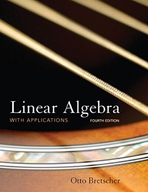Consider the following mass-spring system:Let .r(r) be the deviation of the block from
Chapter 9, Problem 36(choose chapter or problem)
Consider the following mass-spring system:Let .r(r) be the deviation of the block from the equilibrium position at time t. Consider the velocity v(t) = dx/dt of the block. There are two forces acting on the mass: The spring force Fv, which is assumed to be proportional to the displacement x, and the force Ff of friction, which is assumed to be proportional to the velocity,Fs = px and Ff = qv,where p > 0 and q > 0. (q is 0 if the oscillation is fric- tionless.) Therefore, the total force acting on the mass isF = Fs + Ff = -p x - q v.By Newtons second law of motion, we haver dv F = ma = m , dt where a represents acceleration and m the mass of the block. Combining the last two equations, we find that dvorm = px qv, dtdv p q ~dt = ~ m X ~ m V'Let h = p/m and c = q/m for simplicity. Then the dynamics of this mass-spring system are described by the systemdx dtdV A = bx c v dt(b > 0 , c > 0).Sketch a phase portrait for this system in each of the following cases, and describe briefly the significance of your trajectories in terms of the movement of the block. Comment on the stability in each case. a. c = 0 (frictionless). Find the period. b. c2 < 4b (underdamped). c. c2 > 4b (overdamped).
Unfortunately, we don't have that question answered yet. But you can get it answered in just 5 hours by Logging in or Becoming a subscriber.
Becoming a subscriber
Or look for another answer
